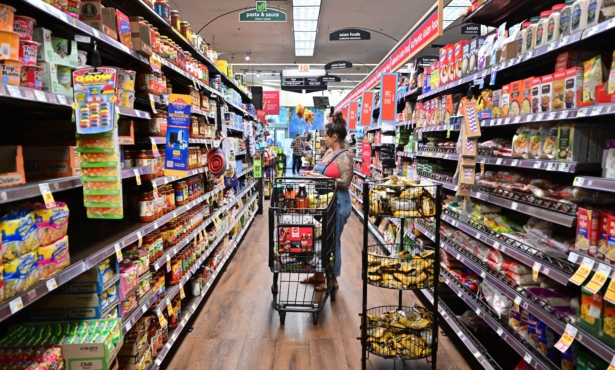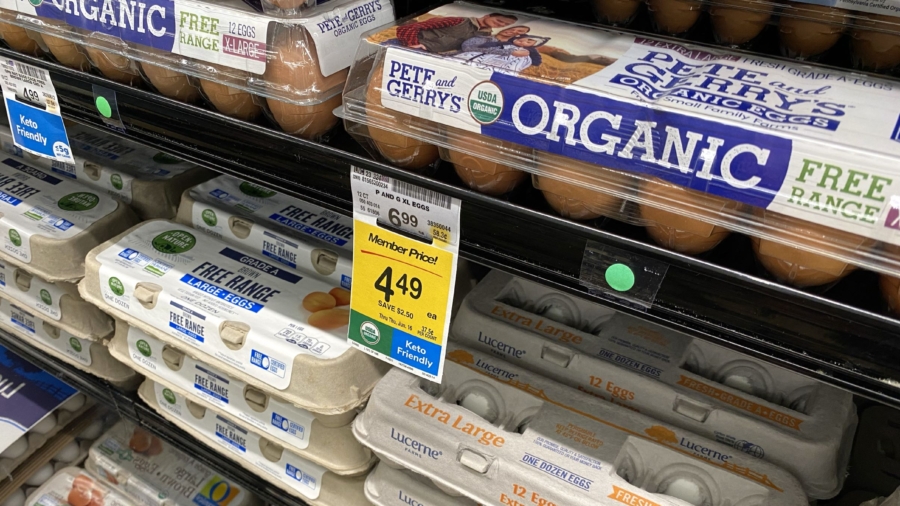Eggs, milk, butter, flour … if you were making pancakes last year, it would have cost you. Food prices surged in 2022.
Grocery prices remain stubbornly high (and nearly double the rate of overall inflation) at 11.8 percent year over year, according to data released Thursday by the Bureau of Labor Statistics.
Blame Russia, the weather, disease, and a host of other factors.
“Even though we’re seeing inflationary pressures ease, we still have a war in Ukraine,” said Tom Bailey, senior consumer foods analyst with Rabobank. “Fertilizer costs have improved, but they still remain very high. Energy costs have improved, but they still remain relatively high. Labor costs still remain a problem—and the list goes on.”
Weather and disease are heavily affecting certain products’ prices, too—and none have been more rotten than egg prices: They’re up 59.9 percent year over year, a rate not seen since 1973, when high feed costs, shortages, and price freezes caused certain agricultural products to soar in price. Since early last year, a deadly avian flu has devastated poultry flocks, especially turkeys and egg-laying hens. That was compounded by increasing demand and higher input costs, such as feed.
As a result, people like Jim Quinn are shelling out upwards of $6 and $7 for a dozen eggs.
Quinn has run daytime eatery The Hungry Monkey Café in Newport, Rhode Island, with his wife, Kate, since 2009. As a breakfast and lunch joint, it leans heavily on eggs for the majority of dishes on its menu—and especially for the 15-egg King Kong omelet novelty food challenge at the restaurant.
Even though eggs and seemingly every other ingredient have risen in price during the past year, Quinn and The Hungry Monkey have chosen to eat the cost.
“I’m trying to hold the line on the prices without having to increase them,” Quinn said. “It makes it extremely challenging for a mom-and-pop [business].”
He added: “We’re just trying to stay alive and hope that things will come down.”
But there’s good news on the horizon. The cost of food is still hard to swallow, but the latest Consumer Price Index shows that those price increases—by and large—are at least growing at slower rates.
In December, “food at home” prices increased 0.2 percent from the month before. That’s the smallest monthly increase since March 2021.
The expectations are for food price increases to continue to moderate, Bailey said.
“I suspect over the next 12 months we will see improvements in supply, improvements in the conditions that have been challenging across most of our food categories,” he said, “and we’ll finally start to see prices, at least upstream, really starting to come off. And then maybe it’s 2024 where we could eventually see some deflation for food.”

Food Prices
Here’s a look at how prices are trending across certain food categories in December, according to BLS data:
Eggs: +59.9 percent annually; +11.1 percent from November
Butter and margarine: +35.3 percent annually; +1.7 percent from November
Lettuce: +24.9 percent annually; +4 percent from November
Flour and prepared flour mixes: +23.4 percent annually; -1 percent from November
Canned fruits and vegetables: +18.4 percent annually; +0.3 percent from November
Bread: +15.9 percent annually; +0.2 percent from November
Cereals and cereal products: +15.6 percent annually; -0.3 percent from November
Coffee: +14.3 percent annually; +0 percent from November
Milk: +12.5 percent annually; -1 percent from November
Chicken: +10.9 percent annually; -0.6 percent from November
Baby food: +10.7 percent annually; -0.2 percent from November
Fresh fruits: +3.4 percent annually; -1.9 percent from November
Uncooked ground beef: +0.7 percent annually; -0.1 percent from November
Bacon and related products: -3.7 percent annually; -2.9 percent from November
Uncooked beef steaks: -5.4 percent annually; +0.9 percent from November
The-CNN-Wire
™ & © 2023 Cable News Network, Inc., a Warner Bros. Discovery Company. All rights reserved.


